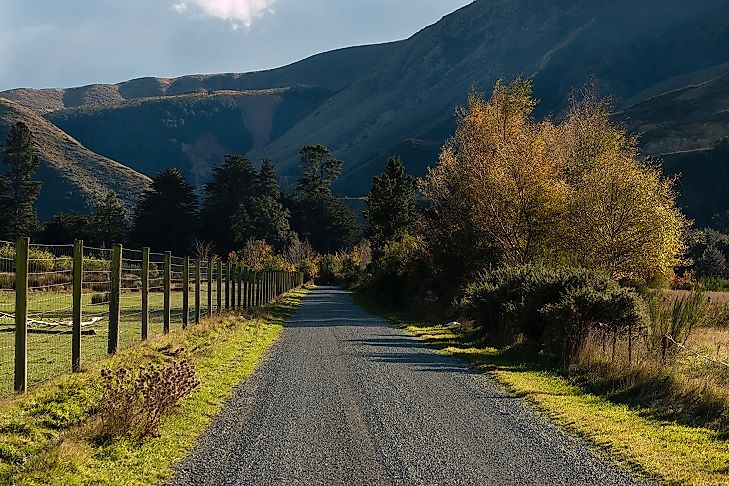Ecological Regions Of New Zealand

New Zealand is located in Oceania, and divided into two large islands and several smaller surrounding islands. Its total land area is 103,738 square miles, which is primarily covered in mountains. This country has around 9,398 miles of coastline. The climate ranges from cold and wet to cold and dry and subtropical. This article takes a look at some of the various ecoregions within New Zealand.
Ecoregions of New Zealand
Antipodes Subantarctic Islands Tundra
The Antipodes Subantarctic Islands tundra can be found throughout four New Zealand island groups. These groups are the Bounty, Auckland, Campbell, and Antipodes Islands. It also stretches into the Macquarie Island of Australia. These islands experience extreme cold, strong winds, and low levels of sunlight. Because of these unique climate conditions, this ecoregion has several endemic plant and animal species. Typical plants include algae, lichens, tussock grass, shrubs, and cushion plants. The Cyathea tree fern is endemic to this specific tundra. These islands host several breeding seals including Antarctic fur seals, southern elephant seals, Australasian fur seals, and the Sub-Antarctic fur seals. The vast majority, 95%, of New Zealand sea lion breed on the Auckland Islands. The Antipodes Subantarctic Islands tundra are also home to two endemic bird species, the Antipodes parakeet and the Reischek parakeet.
Canterbury-Otago Tussock Grasslands
The Canterbury-Otago tussock grasslands belong to the temperate grasslands, savannas, and shrublands biome. This ecoregion is located on South Island of New Zealand between the east coast and the Southern Alps mountains. It is characterized by its dry grasslands and has become an important grazing land for livestock, such as cattle and sheep. Many endemic grasses have now been replaced by nonnative plants. Threatened plant species here include the Hebe cupressoides shrub, the Olearia hectori daisy, and a mistletoe species. Two endemic lizards also inhabit this ecoregion, the Otago skink and the grand skink. Several rivers cross through these grasslands, creating wetland habitats that are important for species such as the black stilt bird. The Canterbury mudfish is also endemic to this region and is unique for its ability to survive in mud when the riverbed has dried out.
Chatham Islands Temperate Forest
The Chatham Islands temperate forest make up part of the temperate broadleaf and mixed forests biome in the country. As its name suggests, this ecoregion is located entirely within Chatham Island. This temperate forest has significant rainfall and limited sunlight which help a variety of plant species to thrive. The ecoregion is home to 50 endemic plants species, some of which include the Chatham Islands sow-thistle, soft speargrass, and the Chatham Islands forget-me-not. The magenta petrel and black robin are both endemic to this ecoregion and are listed as critically endangered and endangered. Other ecoregions found within New Zealand can be found in the table below.
Environmental Threats
Each of these ecological regions is facing a number of environmental threats, all of which are man-made. Invasive species have been introduced throughout New Zealand, which endangers native and endemic plants. These non-natives plants often overtake native plants species, causing them to become endangered or even extinct. When this happens, it negatively affects the animal species that once relied on them for survival. Additionally, deforestation has occurred over large areas in order to clear land for agricultural purposes, including crops and livestock. This has removed many of the trees once found throughout the islands, stripping animals of their natural habitats. Without creating a conservation plan for these ecoregions, one that includes public outreach and corporate environmental controls, New Zealand may lose the majority of its biodiversity.
Ecological Regions Of New Zealand
| Ecological Regions of New Zealand | Biome |
| Antipodes Subantarctic Islands tundra | Tundra |
| Canterbury-Otago tussock grasslands | Temperate Grasslands,Savannas, and Shrublands |
| Chatham Islands temperate forests | Temperate Broadleaf and Mixed Forests |
| Fiordland temperate forests | Temperate Broadleaf and Mixed Forests |
| Kermadec Islands subtropical moist forests | Tropical and Subtropical Moist Broadleaf Forests |
| Nelson Coast temperate forests | Temperate Broadleaf and Mixed Forests |
| Northland temperate forests | Temperate Broadleaf and Mixed Forests |
| Northland temperate kauri forests | Temperate Broadleaf and Mixed Forests |
| Rakiura Island temperate forests | Temperate Broadleaf and Mixed Forests |
| Richmond temperate forests | Temperate Broadleaf and Mixed Forests |
| Southland montane grasslands | Montane Grasslands and Shrublands |
| Southland temperate forests | Temperate Broadleaf and Mixed Forests |
| Westland temperate forests | Temperate Broadleaf and Mixed Forests |











